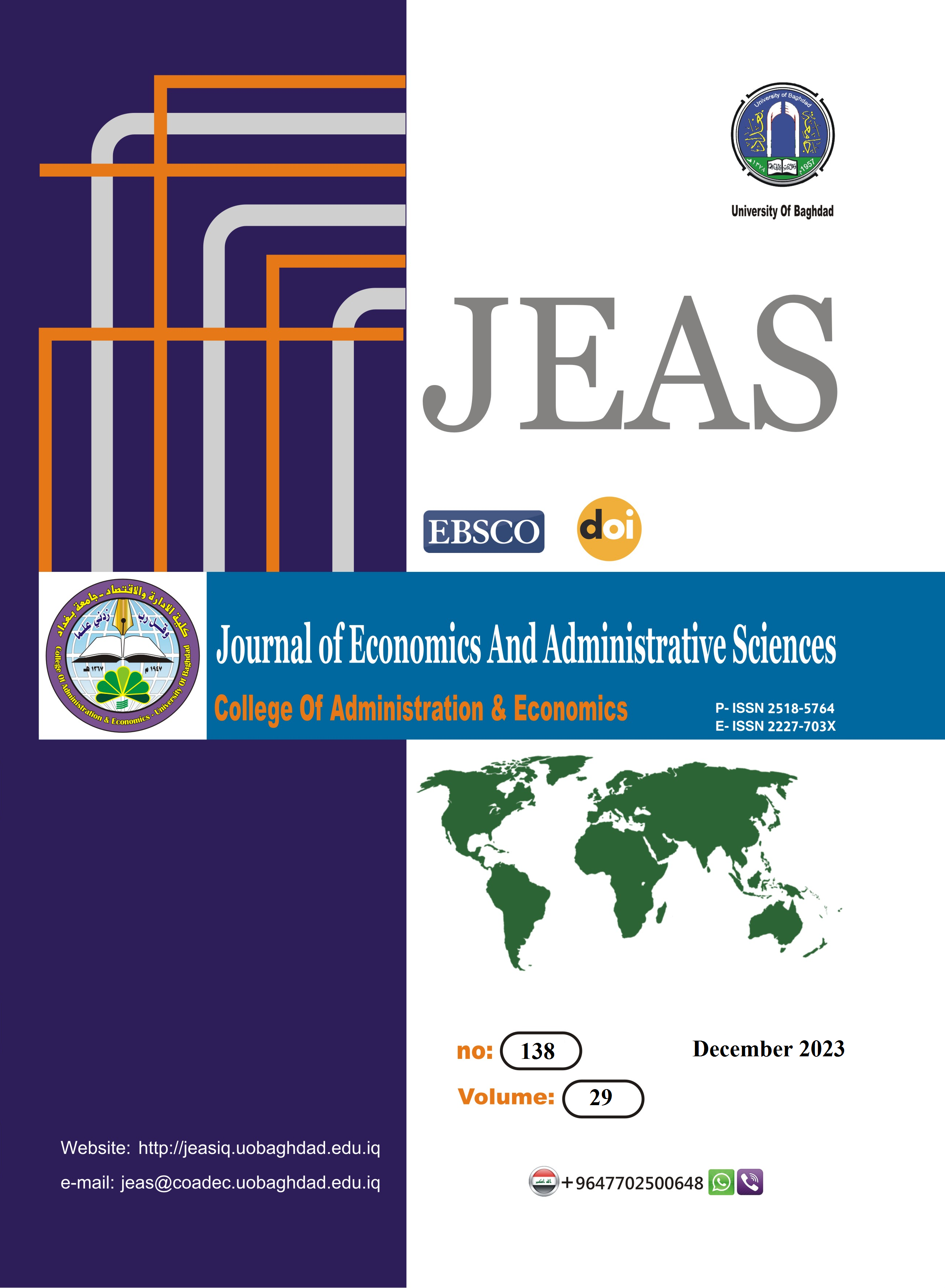Financial Variables and Their Effects on The Development of Bank Credit and Productive Sectors in Iraq Using a Path Analysis Model
DOI:
https://doi.org/10.33095/jeas.v29i138.3041Keywords:
المتغيرات المالية، الائتمان المصرفي، القطاعات الإنتاجية، نموذج تحليل المسار.Abstract
This study aims to measure and analyze the direct and indirect effects of the financial variables, namely (public spending, public revenues, internal debt, and external debt), on the non-oil productive sectors with and without bank credit as an intermediate variable, using quarterly data for the period (2004Q1–2021Q4), converted using Eviews 12. To measure the objective of the study, the path analysis method was used using IBM SPSS-AMOS. The study concluded that the direct and indirect effects of financial variables have a weak role in directing bank credit towards the productive sectors in Iraq, which amounted to (0.18), as a result of market risks or unstable expectations in the economy. In addition to the weak credit ratings of borrowers, this is on the one hand, and on the other hand, the majority of the credit granted by the Iraqi banking system has been directed towards the construction sector as a result of the guarantees that this sector can provide compared to other productive sectors. On the other hand, financial variables were not supportive in directing bank credit towards the development of these sectors in the country's GDP because the results reflected by the direct and indirect effects of financial variables were weak in supporting productive sectors with or without bank credit. (Especially since the local debt was competing with the private sector in obtaining bank credit, and this is called the effect of crowding out.)
Downloads
Published
Issue
Section
License

This work is licensed under a Creative Commons Attribution-NonCommercial-NoDerivatives 4.0 International License.
Articles submitted to the journal should not have been published before in their current or substantially similar form or be under consideration for publication with another journal. Please see JEAS originality guidelines for details. Use this in conjunction with the points below about references, before submission i.e. always attribute clearly using either indented text or quote marks as well as making use of the preferred Harvard style of formatting. Authors submitting articles for publication warrant that the work is not an infringement of any existing copyright and will indemnify the publisher against any breach of such warranty. For ease of dissemination and to ensure proper policing of use, papers and contributions become the legal copyright of the publisher unless otherwise agreed.
The editor may make use of Turnitin software for checking the originality of submissions received.




















